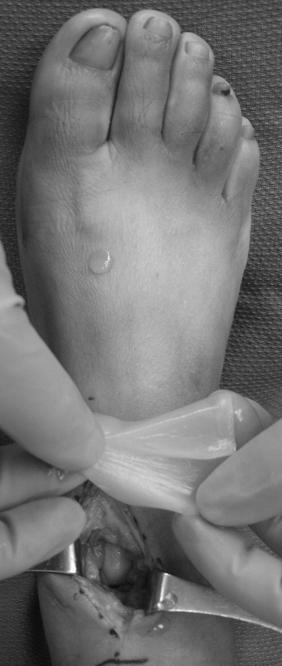Ankle Arthrodiastasis and Interpositional Ankle Exostectomy
Keywords
• Ankle • Arthrodiastasis • External fixation • Distraction • Arthritis
Introduction
Ankle arthrosis is an uncommon pathology that affects the lower extremity, with approximately 70% comprised of a posttraumatic cause.1 Posttraumatic ankle arthrosis often develops from a combination of factors, including direct cartilage damage and altered structural or functional integrity of joint kinematics.2 The resulting articular damage and ankle instability is further compounded by incongruence with improper load-bearing characteristics. All of these factors ultimately accelerate the progression of ankle arthrosis.2,3 This pathology often presents in younger and more active patient population, thus requiring joint reconstructive procedures.
Ankle joint destructive procedures
Historically, arthrodesis of the ankle was considered the gold standard when conservative measures had failed to provide adequate relief. Long-term studies of ankle arthrodesis, however, demonstrate functional limitations, adjacent joint arthritis, long periods of immobilization, and a revision rate of 11% at 5 years.4,5 Ankle joint replacement, which some literature suggests as an alternative to arthrodesis, is limited by the generally accepted notion that ideal candidates for a replacement are aged 50 to 60s, with average to low body mass index, low level of activity, good bone stock, minimal comorbidities, and minimal varus or valgus alignment.
Ankle joint–sparing procedures
Cartilage transplant involves resection and replacement of the arthritic aspects of the joint with cartilage. Cartilage regeneration, a newer concept, is accomplished by stimulating the bone marrow adjacent to the defect, causing neovascularization of the subchondral bone. Such procedures include microfracture, drilling (antegrade, retrograde, and transmalleolar), and biologics (Fig. 1). Microfracture, usually completed arthroscopically, is when instrumentation is introduced into a portal site and driven down into the defect of the cartilage piercing the subchondral plate. This process recruits mesenchymal cells to the region, and the formation of a stable clot is vital to success of the procedure.6 The mechanism of action behind drilling is identical to that of microfracture; however, an arthrotomy must be performed for visualization. Biologics may augment marrow-inducing techniques by serving as a scaffold for mesenchymal cells along with increasing stability of the fibrin clot.7
Stay updated, free articles. Join our Telegram channel

Full access? Get Clinical Tree









